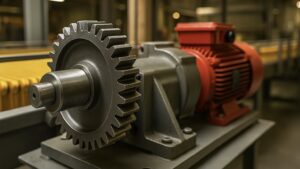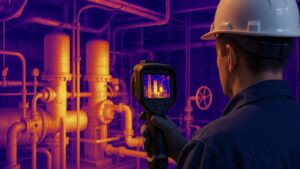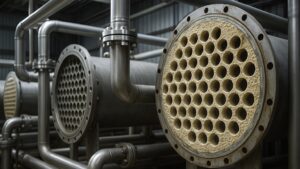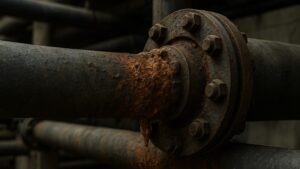Mission-critical operations and insatiable computing need to merge when it comes to data centers. So, energy efficiency has become a critical issue. Energy efficiency has emerged as a key strategic goal. Given the continued expansion of these facilities’ size and complexity, it applies to cost reductions and environmental sustainability. The core of this project is Power Usage Effectiveness (PUE).
This in-depth guide explores the nuances of PUE, breaking down its calculation techniques, and interpretation. It will also show tactics that can improve data center energy efficiency and help operators achieve a balance. This is between environmental responsibility and operational excellence.
Understanding Power Usage Effectiveness (PUE)
Power Usage Effectiveness widely accepts a measure that expresses how energy-efficient a data center building is.
What is PUE?
The ratio known as power use effectiveness, or PUE, assesses how much energy a data center facility uses overall vs how much it uses only for its IT equipment. So, the calculation involves dividing the overall energy consumption of the facility by the energy consumption of the IT equipment. Furthermore, a data center is seen as being more energy-efficient if its PUE value is close to 1.0.
PUE gives operators a consistent method to gauge and compare the energy efficiency of data centers. It helps them to pinpoint areas for development. It also helps to monitor the success of their energy-saving efforts over time.
How Do you Calculate Power Usage Effectiveness?
Power Usage Effectiveness calculations must be accurate to produce comparisons and evaluations of energy efficiency that are relevant.
The PUE Formula
The PUE formula is expressed as:
PUE = Total Facility Energy Consumption / IT Equipment Energy Consumption
The overall energy consumption of the data center facility includes the energy needed by lighting or power distribution units. It also includes the cooling systems and other supporting equipment.
IT equipment energy consumption describes the energy in need by servers, storage systems, network equipment, and other IT hardware. This carries out computing and data processing processes.
Data Collection and Measurement
To know what is the power consumption of a data center, data center managers need to put in place reliable metering and monitoring systems. It records the energy usage of different facility components to compute Power Usage Effectiveness precisely. Moreover, organizations usually require installing energy meters at key locations for this purpose. It includes the main power feed, IT equipment racks, cooling systems, and other vital infrastructure.
Furthermore, continuous data gathering and routine monitoring are crucial. It helps to account for fluctuations in energy usage brought on by several things. This includes IT workloads, seasonal changes, and facility operations,
Interpreting Power Usage Effectiveness Values
Proficiency in interpreting PUE data is crucial for conducting efficient assessments and benchmarking of energy efficiency.
PUE Ranges and Benchmarks
Experts consider a data center with a Power Usage Effectiveness of 1.0 as ideal, where all energy is used solely by the IT hardware. However, given the energy needs of supporting infrastructure, this is an unachievable goal.
A contemporary, well-designed data center is thought to have a PUE value between 1.2 and 1.4. It is set as per the industry benchmarks and best practices. While numbers over 2.0 are often regarded as inefficient, values above 1.5 may suggest areas for energy efficiency improvements.
It is crucial to benchmark against comparable data center setups and operating conditions. This is because PUE values might vary depending on various factors. It includes facility size, age, IT equipment density, and local climatic conditions.
Optimizing Power Usage Effectiveness in Data Centers
It takes a complete approach to data center operations, design, and continual development to achieve and maintain ideal PUE levels.
Efficient Cooling Strategies
One of the main factors influencing data center energy use is cooling systems. The total energy footprint can have significant reductions. Moreover, the PUE can have a boost by putting effective cooling solutions into practice. Some effective approaches include:
- Hot/cold aisle containment
- Free cooling and economizers
- Liquid cooling solutions
- Optimized temperature and humidity setpoints
- Intelligent cooling controls and monitoring
Power Distribution Optimization
Enhancing PUE involves optimizing data center power distribution. Reduce energy usage and improve overall efficiency using effective techniques. It includes installing power factor correction and deploying high-efficiency UPS. This also includes minimizing distribution losses through intelligent power management.
IT Equipment Consolidation and Virtualization
Consolidating and virtualizing IT workloads on fewer physical servers can considerably cut energy usage. This is by reducing the number of active servers and the corresponding cooling requirements. Furthermore, PUE may be increased and resource utilization made more efficient with the use of technologies. It includes cloud computing, server virtualization, and containerization.
Airflow Management and Layout Optimization
Effective management of airflow and optimization of data center layout is essential. It maintains effective cooling and minimizes energy loss. Furthermore, techniques such as using blanking panels, managing cables properly, and placing equipment strategically actively reduce hot spots. It also increases cooling effectiveness and eventually improves Power Usage Effectiveness.
Renewable Energy Integration
The total carbon footprint of the data center can go down, and its PUE may even increase, by including renewable energy sources. It includes solar or wind power in its energy mix. It’s crucial to take into account the erratic and intermittent nature of renewable energy sources. It is also crucial to put in place suitable energy storage and management techniques. It ensures steady operations,
Power Usage Effectiveness Limitations and Alternative Metrics
Although Power Usage Effectiveness is a commonly used statistic, it has several drawbacks. These have spurred the creation of other metrics to assess the energy efficiency of data centers.
Limitations of PUE
The fact that PUE does not take into consideration the energy efficiency of IT equipment itself is one of its main drawbacks. Furthermore, it ignores the potential energy savings. It can be realized through more energy-efficient IT gear and software. PUE instead concentrates only on the infrastructural efficiency of the building. Furthermore, PUE ignores the energy source and the carbon footprint related to energy use. Both of them are factors that are becoming more and more significant when it comes to sustainability and environmental responsibility.
Alternative Metrics
Several organizations have adopted other measures that solve the shortcomings of PUE. It also offers a more thorough evaluation of data center energy efficiency:
- Energy Reuse Effectiveness: It evaluates how well data center waste heat is repurposed. This is for various uses, such as cooling or heating.
- Carbon Usage Effectiveness: It considers the energy sources and their carbon footprints. This is when calculating the carbon emissions related to the energy used by the data center.
- Water Usage Effectiveness: It calculates the water usage of the data center. It is significant for establishments in water-limited areas. It is also crucial for those using water-based cooling systems.
Power Usage Effectiveness remains a commonly in use and useful indicator for evaluating the overall energy efficiency of a facility. This is regardless of whether these alternative measures offer more information and focus on certain areas of data center sustainability.
Conclusion
Achieving optimal Power Usage Effectiveness is vital for data centers. It saves energy, reduces costs, and lessens environmental impact. Furthermore, data centers can improve energy performance significantly. This is by accurately measuring PUE and using efficient cooling and power strategies.
It’s important to recognize PUE’s limitations and consider additional metrics for a holistic view of sustainability. As the data center industry evolves, adopting comprehensive energy efficiency practices is crucial. It helps to meet growing computing demands sustainably.
Join the Energy Efficiency for Data Centers Summit on May 16-17, 2024, in Dallas TX, USA, to gain insights and network with industry leaders. This event offers a unique opportunity to learn about cutting-edge technologies and collaborate on sustainable data center operations, supporting cost-effective practices in the evolving landscape.





